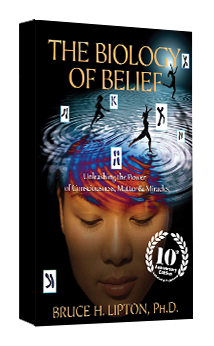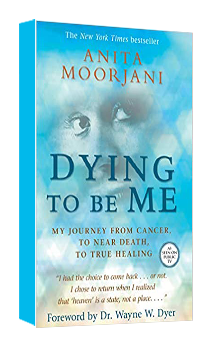The Tyranny of Averages: Why the Outliers Matter
ByGV Ravishankar
PublishedJuly 21, 2022
Averages are useful as they simplify design and help in decision making – but can also be misleading. GV Ravishankar illustrates why it’s critical to examine the impact of outliers and plan for the unexpected.
In 1965 Jeanne Louise Calment, a French woman with no living heirs, sold her apartment to a civil law notary named Andrew-Francois Raffary through a life estate contract that stipulated a monthly payment of 2,500 francs, and the right to occupy the apartment, until her death. It sounded like a pretty good deal considering Ms. Calment, who was 90 years old at the time, was already well beyond the lifespan of the average woman. Mr. Raffray could have hardly predicted how the deal would play out.
Ms. Calment, now credited as the oldest person to have ever lived, reached the age of 122 and 164 days, becoming a total outlier when it comes to lifespans.
She outlived Mr. Raffay, who passed away in 1995 – thirty years after he signed the contract – by several years. The fact that she lived so long despite smoking daily, eating dessert with every meal and consuming up to 1 kg of chocolate per week is an interesting side note (although not highly recommended, because adoption of such a lifestyle may not result in similar longevity for us!).
“In life, one sometimes makes bad deals!”, Ms Calment commented, in her later years. We could all find ourselves in Mr Raffray’s situation if we choose to ignore probability and distributions and stick to only averages!
It is often hard for us to work with ranges and distributions, and the human brain craves for a more “certain” average number to simplify our understanding of situations. Averages are indeed useful as they simplify design – think of the average wait times for a cab, the height of our dining tables and chairs, the level at which teachers teach to a classroom full of students (none of whom are exactly average!), and even the way we assess and compare the investment performance of funds. But the linearity of the human mind latches on to expected outcomes that match the average – I expect the taxi to take the average wait time, I expect to live to the average expected life time of a man, and I expect the fund to deliver the expected average internal rate of return (IRR) outcome. Except that averages are misleading and outcomes fall across a probabilistic distribution pattern; yet very often we don’t plan for the possibility of extremes.
In business as well, we use averages as a simple way to measure many things – average Customer Acquisition Costs (CAC), average call wait times for customers, Average Order Values (AOVs), average employee satisfaction, average risk in the portfolio, etc. While the simplicity of this is helpful to understand high level trends, it masks some very useful insights into the business that we may not otherwise pay attention to. Let’s take CAC for example. Average CAC is usually measured as total marketing dollars divided by total number of new customers. New customers typically include both organic and paid customers, and usually as the brand matures more organic customers show up, contributing to a reduction in cost of overall acquisition. But if the average CAC remains the same, this indicates an increasing CAC for paid users over time. This means that incremental or marginal CAC may be a better signal to the competitive intensity or the depth of market/channel.

Similarly when we discuss AOV, a few large customers could skew the average and as a result our analysis may not turn up an accurate representation of what to expect in future. The same thinking applies when it comes to acquiring customers through discounts or setting pricing. The marginal customers acquired at high discounts or low prices may give us a feeling of higher growth, when in reality that customer is not margin accretive at all. Working with averages could potentially lead to wrong business decisions in each of these cases.
There is often a lot more insight to glean from understanding the extremes versus the average. There’s a lot to learn from the unhappy customers who rated you at one star or the extremely happy customers who gave you a five star rating. The outlier client that paid you 3-4x your average AOV may hide an interesting use case that you could point your product towards. For example, Rebel Foods launched a “distributed synchronous Pizza Party at home” proposition for corporates, after closely observing the behavior of some large corporate orders coming in via their consumer app during Covid. Similarly, productizing and addressing some pain points of the dissatisfied customers who provide low ratings may help improve the positivity of the brand significantly – because usually the upset folks are far more likely to voice their views on social media versus the average happy customer.
What’s more, not planning for extreme events can result in significant losses. These are the improbable but not impossible events.
Some of you may remember how several large Indian corporates that bought structured products throughout 2007/2008 based on Yen-USD exchange rates that had never crossed certain thresholds took a massive hit during the 2008 Global Financial Crisis when those thresholds gave way. Sometimes we take some “calculated risks” assuming expected outcomes based on past data, ignoring the fact that we could find ourselves at the extreme outcomes once in a while. In his book, The Black Swan: The Impact of the Highly Improbable, Nicolas Taleb delves into this topic, detailing how improbable events are not impossible and the consequences of not planning for them could be sometimes catastrophic.
What Mr. Raffray missed was that his calculated risk of paying Ms. Calment a monthly lifetime income in exchange for her property did have the possibility, but not a high probability, of going against him. While a basket of such bets would have likely worked in his favor, this one individual deal played out badly for him. He, and later his family, wound up paying more than twice the value of the property to Ms. Calment over the intervening years. Taking an average and applying it to an individual sample can result in such circumstances! A lot of life is about probability, and understanding the upside and downside of extreme events helps us make better business and life decisions.
Taleb sums up this tyranny of averages nicely with his quote:
“Never cross a river that is on an average four feet deep.”
“Sometimes we take some “calculated risks” assuming expected outcomes based on past data, ignoring the fact that we could find ourselves at the extreme outcomes once in a while.”
Recommended Reads
Here are three articles I read over the last few weeks that I found interesting:
My partner Shailendra shared this wonderful article, “The Importance of Friendship”,by Reid Hoffman with me recently. This felt like a timely reminder on why spending time with friends is so important in an otherwise super busy professional life. It also made me think about how I should schedule my week to allow for more time with friends.
‘Quotes from Seth Klarman Interview’ is a nice summary of the conversation between legendary value investor Seth Klarman and Das Narayandas at Harvard Business School. This post covers many topics including the current environment, his investing philosophy,how to find an edge and his favorite business books.
Shein, a DTC Chinese fashion apparel company that’s taken the world by storm with super fast fashion at highly affordable prices, is one of the industry’s biggest success stories. This article, titled ‘What Chinese media reveals about Shein’s secretive operations’, provides a behind-the-curtain view into how their supply chain – their real super power – works and how vendors are managed tightly to deliver such fast turnarounds. (For full disclosure, Sequoia Capital China is a shareholder in Shein.)
If you have time for a longer read, here are two books I’d like to recommend.

Zen in the art of Archery, by Eugen Herrigel
As you know I believe in serendipity. This book, which is about a form of Buddhism practiced in Japan, is told through the author’s quest to learn archery from one of the country’s great kyudo masters. The message about how to focus deeply on the inputs without worrying about the outputs really resonated with me. It’s all about believing in the process and practicing over and over until the result seems effortless!

The Biology of Belief: Unleashing the Power of Consciousness, Matter, and Miracles, by Bruce Lipton
This book has an interesting take on how the field of cell biology has failed to incorporate newer sciences and how energy, frequency, and vibrations from outside the cell define how cells behave. The author makes a compelling case on how epigenetics (how environment alters the genes) allows us to understand the link between mind and matter, and how we actually have the power to use our thoughts and beliefs to shape our lives.

Dying to Be Me: My Journey from Cancer, to Near Death, to True Healing, by Anita Moorjani
A bonus recommendation – Bruce Lipton’s book led me to this incredible book by Anita Moorjani on her near death experience, what she learnt about the spirit life and what that, in turn, can teach us about life on earth. This is almost a magical story about someone who healed herself from cancer from a point where doctors had declared her close to death.
Do write in at gv@peakxv.com if any of my interests intersect with yours! Click here to read more articles on Peak XV’s blog. For more editions of Connecting the Dots, click here. I’m also on LinkedIn and Twitter.